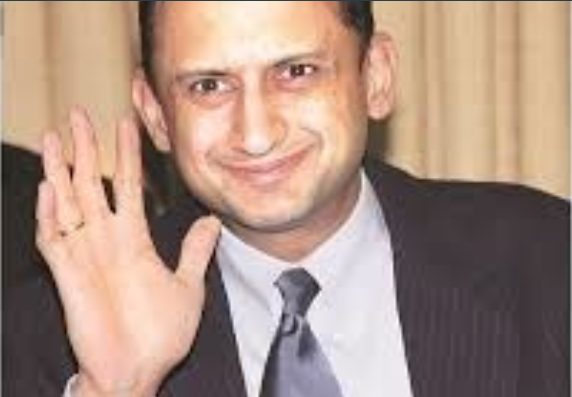Ever since former Reserve Bank of India (RBI) Governor Y V Reddy coined the term in 2005, India has come a long way on the path of “financial inclusion”. Reddy used the term in the annual monetary policy for the financial year 2005-06 (released on April 20, 2005).
The JAM (Jan Dhan accounts, Aadhaar cards and mobile numbers) trinity has given it a big leg-up. Or that’s what we believe.
Bhagwan Chowdhry and Anas Ahmed, a professor and executive director, Digital Identity Research Initiative of Indian School of Business, and lead research officer for the research wing, respectively, have raised a fundamental question: What does it mean to be financially included?
Does having an Aadhaar card, a Jan Dhan account and a mobile phone suffice to be counted as a member of the inclusive club? Does the hinterland have easy access to financial products and institutions? Is the fintech revolution for real?
Their book Fintech for Billions has raised many uncomfortable questions and tried exploring unconventional answers through painstaking research, covering small towns and villages of several Indian states, and involving people in the so-called bottom of the pyramid. The biggest issue with the fintech revolution in the world’s fastest-growing economy is that the full potential of financial policy and technology is not within the reach of the poorest of the poor.
The book offers a string of simple solutions.
Cash is accepted by everyone, everywhere. Cash is simple and intuitive. Cash is simple, human, and ubiquitous — SHUb. But it has limitations. It can travel only at the speed of the person, who is carrying cash and it can’t be used for e-commerce.
At the same time, electronic payments are not SHUb. They are simple but they lack human touch and are not ubiquitous. Often bank employees are rude to poor and uneducated people and business correspondents (BCs) — the last-mile connector on the banking turf — are not present everywhere. In contrast, moneylenders are everywhere and their transactions are simple but they are not humane.
How many of the 51.11 crore Pradhan Mantri Jan Dhan Yojana (PMJDY) account holders are aware of the overdraft facility that the account offers? Many of them don’t even know how to check their account balance.
The duo proposes a simple solution to this expansive problem — a single toll-free number 222 — across banks. When dialled from their registered mobile numbers, this number would tell the caller their account balance in their preferred language. If we can dial 100 for the police, 101 for fire emergencies and 108 for an ambulance, why can’t we have a national number for checking bank balance?
This is important for the poor people, who often face different kinds of emergencies and want to know how much money they have in their bank account and whether their money is safe. Because they find it difficult to know the account balance, they keep money at home, don’t earn any interest, and remain outside the financial system. One can say that the banks send SMS on bank balances to their customers. That’s true but illiterate customers are not able to read an SMS; they can remember BBB (222) on a feature phone for Bank Balance Batao.
Talking about the role of SMS in the financial system, nothing can beat this experiment. In 2010, Shiva Kumar, a chief general manager at the Hyderabad local head office of the State Bank of India (SBI), designed a simple consumer complaint programme for the bank’s customers in (undivided) Andhra Pradesh. Any SBI customer, from anywhere in the southern state, who was unhappy with any service of the nation’s largest lender, could send a text message UNHAPPY to a number: 8008 202020. Billboards across the state and all SBI branches advertised the “SMS UNHAPPY” service aggressively.
The message was received and recorded in a web-based system at Kumar’s office, assigned a unique complaint number. At the second stage, an SMS, acknowledging the complaint along with the complaint number, was sent to the customer. Trained staff from the “HAPPY ROOM” tackled such complaints and, after they were resolved, closure messages were sent to the customers. The programme, which took off brilliantly, had great promise but, as it scaled up, it started deteriorating, says the book.
Often, some customers end up drawing more money from their account than they want (say ~10,000 instead of ~1,000) as they are not good at using the ATMs. One way of avoiding such accidents is by making the ATM kiosks in rural India entirely voice-enabled. For instance, the ATM can tell the customer, “You have entered ~10,000 for withdrawal. Are you sure you want to withdraw ~10,000?”
Another interesting idea the book floats is employing an army of young women for creating digital literacy — the Digital Didis. Who is a Digital Didi? She is a literate young woman — could be in high school, college or even a homemaker who is willing to spend a couple of hours a day to play the role of a Digital Didi. She will help spread digital literacy — could be approached on the street, in buses and trains — anywhere.
Her clientele is gender-, age- and class-agnostic. Each Didi will have her own QR code and each transaction she facilitates could be tagged with her identity for accountability and incentives. Her “shift” could start the moment she wears her uniform over her clothes and end when she takes it off. An idea worth exploring by the banking system with checks and balances monitoring their movements — essential to keep the incidents of fraud at bay.
The book is replete with instances of the problems the poor people face in the financial system daily and offers simple solutions such as Mukty Money (an uncomplicated repayment programme for small loans, which the borrowers can understand) and Micro Angels (intermediaries for banks to reach out to the poor with loans) to compete with the traditional moneylenders.
It also talks about insurance, gold-linked savings and different investment avenues that can be created for the people at the bottom of the pyramid. All the pieces that we require to make such things happen are already there. All we need is to put them together with some ingenuity, creativity, and speed.
The suggestion, which I find the most interesting, is opening a bank account for every child born. Call it subsidy or yet another welfare scheme, irrespective of political affiliations, the government at the Centre and states have been going through this route forever. Probably this is an easier option than creation of jobs. From the nation’s coffers, ~5,000 to open an account for a child born into a poor family is a burden which no government will find difficult to lift. Of course, this should not end up encouraging poor parents to have more children.
After PMJDY, it will be another milestone for financial inclusion.
Merry Christmas.
This column first appeared in Business Standard.
The writer, a Senior Adviser to Jana Small Finance Bank, writes Banker’s Trust every Monday in Business Standard.
Latest book Roller Coaster: An Affair with Banking
Twitter: TamalBandyo
Website: https://bankerstrust.in



